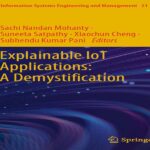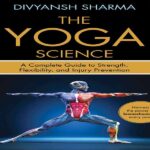- عنوان کتاب: A Gentle Introduction to Quantum Machine Learning
- نویسنده: Yuxuan Du • Xinbiao Wang•Naixu Guo
- حوزه: یادگیری ماشین کوانتومی
- سال انتشار: 2025
- تعداد صفحه: 224
- زبان اصلی: انگلیسی
- نوع فایل: pdf
- حجم فایل: 5.85 مگابایت
کامپیوترهای کوانتومی، به عنوان دستگاههای محاسباتی نسل بعدی، از اصول کوانتومی برهمنهی و درهمتنیدگی برای پردازش اطلاعات به روشهایی اساساً متفاوت از کامپیوترهای کلاسیک استفاده میکنند. این خواص منحصر به فرد، کامپیوترهای کوانتومی را قادر میسازد تا بسیاری از مشکلات عملی را که برای کامپیوترهای کلاسیک غیرقابل حل هستند، حل کنند. اگرچه محاسبات کوانتومی هنوز در مراحل اولیه خود است، اما از سال ۲۰۱۹ وارد دورهای شدهایم که برتری کوانتومی توسط چندین گروه تحقیقاتی و سازمانهای صنعتی به صورت تجربی نشان داده شده است و پتانسیل عظیم فناوریهای کوانتومی را برای تغییر جنبههای مختلف زندگی روزمره برجسته میکند.
یادگیری ماشین (ML) به طور گسترده به عنوان یکی از امیدوارکنندهترین و تأثیرگذارترین کاربردهای محاسبات کوانتومی در نظر گرفته میشود. توانایی محاسبات کوانتومی در تسریع پیشرفت در مدلهای بنیادی، مانند ترانسفورماتورهای از پیش آموزشدیده مولد (GPT) و حتی هموار کردن راه به سوی هوش عمومی مصنوعی (AGI)، به ویژه جذاب است. پیشرفتهای اخیر در هر دو زمینه نظریهها و آزمایشها، قدرت یادگیری ماشین کوانتومی (QML) را به نمایش گذاشته است. به طور دقیقتر، ادغام محاسبات کوانتومی با ML ممکن است منجر به رویکردهای جدیدی شود که با ارائه زمان اجرای سریعتر، عملکرد بهتر و کاهش نیاز به دادهها، از الگوریتمهای کلاسیک پیشی میگیرند. این پیشرفت میتواند در بسیاری از زمینهها مانند بینایی کامپیوتر، پردازش زبان طبیعی، کشف دارو، امور مالی و علوم بنیادی مفید باشد.
به عنوان یک حوزه میانرشتهای، توسعه QML نیازمند همکاری نزدیک بین دانشمندان و مهندسان برجسته در هر دو حوزه محاسبات کوانتومی و هوش مصنوعی (AI) است. در عین حال، با پیشرفت QML در کنار پیشرفت مداوم سختافزار کوانتومی، نیاز فزایندهای به تخصص جامعه هوش مصنوعی برای پیشبرد این حوزه نوظهور وجود دارد. با این حال، چارچوبهای مفهومی و اصطلاحات متمایز محاسبات کوانتومی و کلاسیک، موانع قابل توجهی را برای محققان و متخصصان با پیشینه کلاسیک یادگیری ماشین در درک مکانیسمهای پشت الگوریتمهای QML و مزایایی که ممکن است ارائه دهند، ایجاد میکند. کاهش این مانع برای ورود، همچنان یک چالش بزرگ در جامعه است.
برای غلبه بر این چالش، ما این کتاب را نوشتهایم تا مقدمهای جامع بر آخرین تحولات QML ارائه دهیم. چه یک محقق هوش مصنوعی، یک متخصص یادگیری ماشین یا یک دانشجوی علوم کامپیوتر باشید، این منبع شما را به پایهای محکم در اصول و تکنیکهای QML مجهز میکند. این کتاب با پر کردن شکاف بین یادگیری ماشین کلاسیک و محاسبات کوانتومی، میتواند به عنوان منبعی مفید برای کسانی که به دنبال تعامل با QML و کاوش در خط مقدم هوش مصنوعی در عصر کوانتومی هستند، عمل کند.
Quantum computers, as next-generation computational devices, harness the quan-tum principles of superposition and entanglement to process information in ways fundamentally different from classical computers. These unique properties enable quantum computers to address many practical problems that are intractable for classical computers. Although quantum computing is still in its early stages, we have entered an era since 2019 where quantum supremacy has been experimentally demonstrated by several research groups and industrial organizations, underscoring the immense potential of quantum technologies to transform various aspects of everyday life.
Machine learning (ML) is widely regarded as one of the most promising and impactful applications of quantum computing. The ability of quantum computing to accelerate advancements in foundational models, such as generative pre-trained transformers (GPTs), and even pave the way toward artificial general intelligence (AGI), is particularly compelling. Recent progress in both theories and experiments has exhibited the power of quantum machine learning (QML). More precisely, the integration of quantum computing with ML may lead to novel approaches that outperform classical algorithms by offering faster runtimes, better performance, and reduced data requirements. This advancement can benefit many areas such as computer vision, natural language processing, drug discovery, finance, and fundamental science.
As an interdisciplinary field, the development of QML requires close collabo-ration between leading scientists and engineers in both quantum computing and artificial intelligence (AI). At the same time, as QML advances alongside the continuous progress of quantum hardware, there is a growing need for expertise from the AI community to drive this emerging field forward. However, the distinct conceptual frameworks and terminologies of quantum and classical computing present significant barriers for researchers and practitioners with a classical ML background in understanding the mechanisms behind QML algorithms and the benefits they may offer. Reducing this barrier to entry remains a major challenge within the community.
To overcome this challenge, we have written this book to deliver a comprehensive introduction to the latest developments in QML. Whether you are an AI researcher, an ML practitioner, or a computer science student, this resource will equip you with a solid foundation in the principles and techniques of QML. By bridging the gap between classical ML and quantum computing, this book could serve as a useful resource for those looking to engage with QML and explore the forefront of AI in the quantum era.
این کتاب را میتوانید از لینک زیر بصورت رایگان دانلود کنید:



































نظرات کاربران